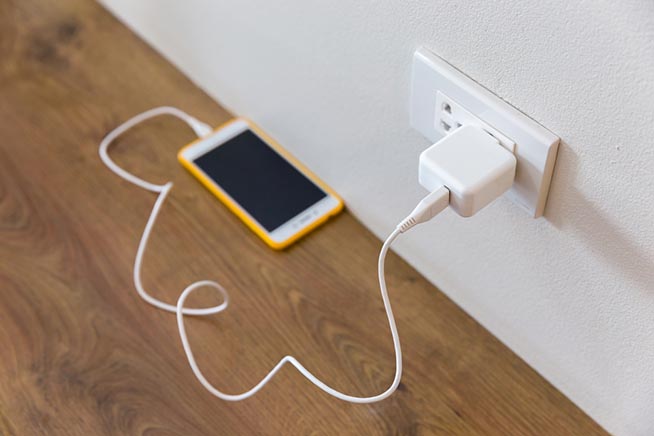Your smartphone is on its last legs, but you need to post your latest selfie. And find a USB port or public outlet. Be careful: they’re not safe
The nightmare of most users is a dead smartphone battery. Fortunately, in many cities have been installed charging stations to use in time of need. This stroke of “luck” could cost you dearly: the power source may have been compromised by some cyber-criminal who, while charging your device, steals valuable information.
It is not paranoia, unfortunately it is reality. The imagination of hackers has no boundaries, as Drew Paik of Authentic8 – a company specializing in cybersecurity – explained at the recent cyber-security conference organized by RSA in San Francisco. «Anche solo collegando il telefono a una ciabatta o a un caricabatterie compromessi, il vostro dispositivo è ormai infettato mettendo a rischio tutti i vostri dati». Le stazioni di ricarica pubbliche e punti di accesso Wi-Fi si trovano in luoghi come aeroporti, aerei, centri congressi e parchi, così gli utenti possono avere sempre accesso a dati e cellulare. Ma collegare un telefono a una porta sconosciuta comporta dei rischi.
Rischi ovunque
 Fonte foto: Shutterstock
Fonte foto: Shutterstock
Non è necessario essere un tecnico informatico per mettersi al riparo dagli hacker. Scopri alcuni suggerimenti facili e immediati
Il cavo che si utilizza per ricaricare uno smartphone è usato anche per inviare i dati dal telefono ad altri dispositivi. Quando si collega, per esempio, un iPhone al Mac tramite il cavo di ricarica, è possibile scaricare le foto dal telefono al computer. If the port is compromised, a hacker can gain access to all sorts of information, Paik points out. This could be emails, text messages, photos and contacts. This technique – known in jargon as “juice jacking” – was discovered in 2011 by a group of researchers. And the same researchers, last year, also demonstrated “video jacking,” which involves using hacked ports and the cell phone display to record everything that is typed and displayed on the device.
Smartphones at risk with public USB ports
Authentic8, to demonstrate the habit of users using outlets without posing any security concerns, placed a charging station in its booth at the RSA conference, also offering cables to charge charge charge their devices. It was an informal experiment that showed, however, that about 80% of people quietly plugged in their phones without asking about security. È anche vero che si trovavano a una conferenza sulla sicurezza e si sono fidati. Drew Paik consiglia, però, di non usare porte USB sconosciute, ma di investire piuttosto in una batteria portatile per ricaricare il telefono e in speciali cavi USB che non trasmettano dati, solo corrente elettrica.
 Fonte foto: Shutterstock
Fonte foto: Shutterstock
Premi sull’immagine per scoprire alcuni trucchi per aumentare la durata della batteria